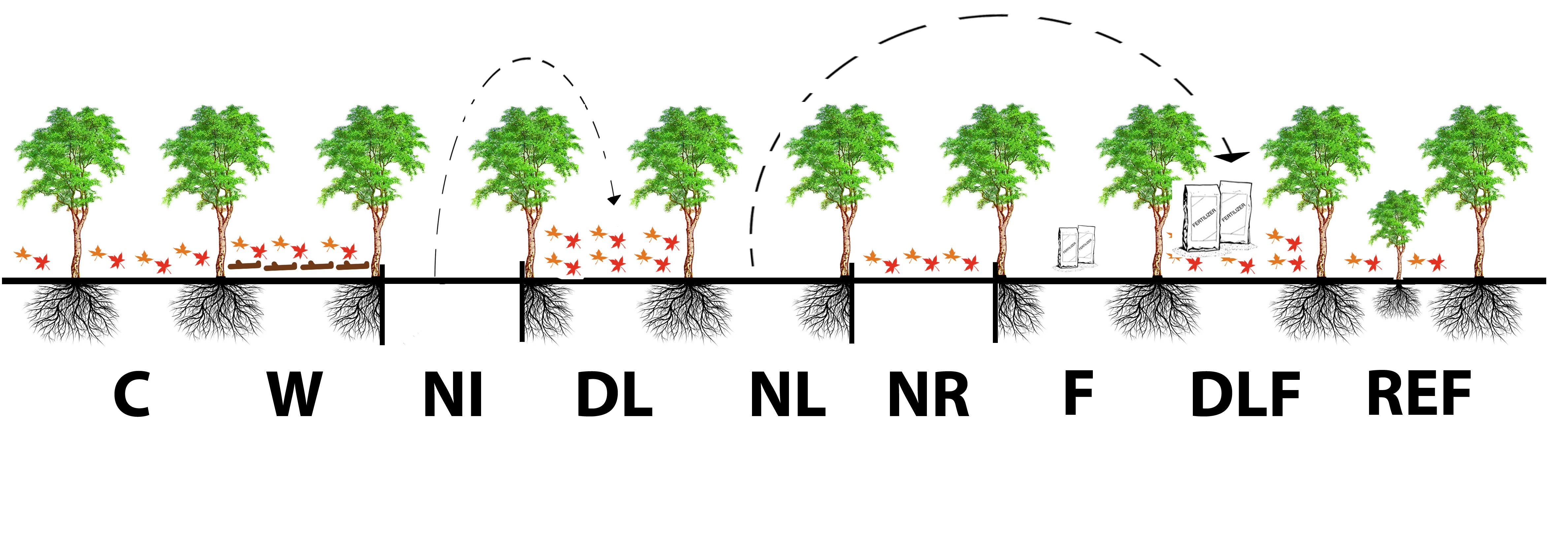| The DIRT project was started in 1990 at the Harvard Forest in Petersham, Massachusetts, as one of several core projects of the Harvard Forest LTER site. The overall GOAL of the project is to assess the role of plant litter (both from above and belowground) in controlling the accumulation and turnover of organic matter and nutrients in forest soils. This is done by systematically increasing or decreasing inputs of litter from aboveground and by either allowing or excluding tree roots from growing into permanent plots located beneath the canopy of a mid-successional deciduous forest. Field measures include soil CO2 flux, soil solution chemistry (DOC, DON), soil moisture and soil temperature.Soil solutions are collected from lysimeters located beneath forest floors (zero tension) and at 60 cm depth (Prenart â). By examining differences in the measured data among treatments, we are able to determine the linkages between above- and belowground plant inputs and microbial activity and their relationships to soil organic matter dynamics.
Soil samples were collected from the plots at the inception of treatments in 1990 and again after 1 (1991) and 5 years of treatment (1995). Forest floor, 0-10 cm mineral soil, and 10-15 cm mineral soil were assayed for total soil organic matter, %C, %N and for standard soil properties (acidity, cation exchange capacity, pH, base saturation). We incubated subsamples of these soils and measured CO2 release, net N mineralization (Nadelhoffer 1990), and gross N fluxes (Davidson et al. 1991) in order to determine the effects of field treatments on microbial activity and on C and N turnover. We plan to continue sampling and analyzing soils in this manner approximately once per decade. |
 Nadelhoffer Lab
Nadelhoffer Lab
Department of Ecology and Evolutionary Biology

